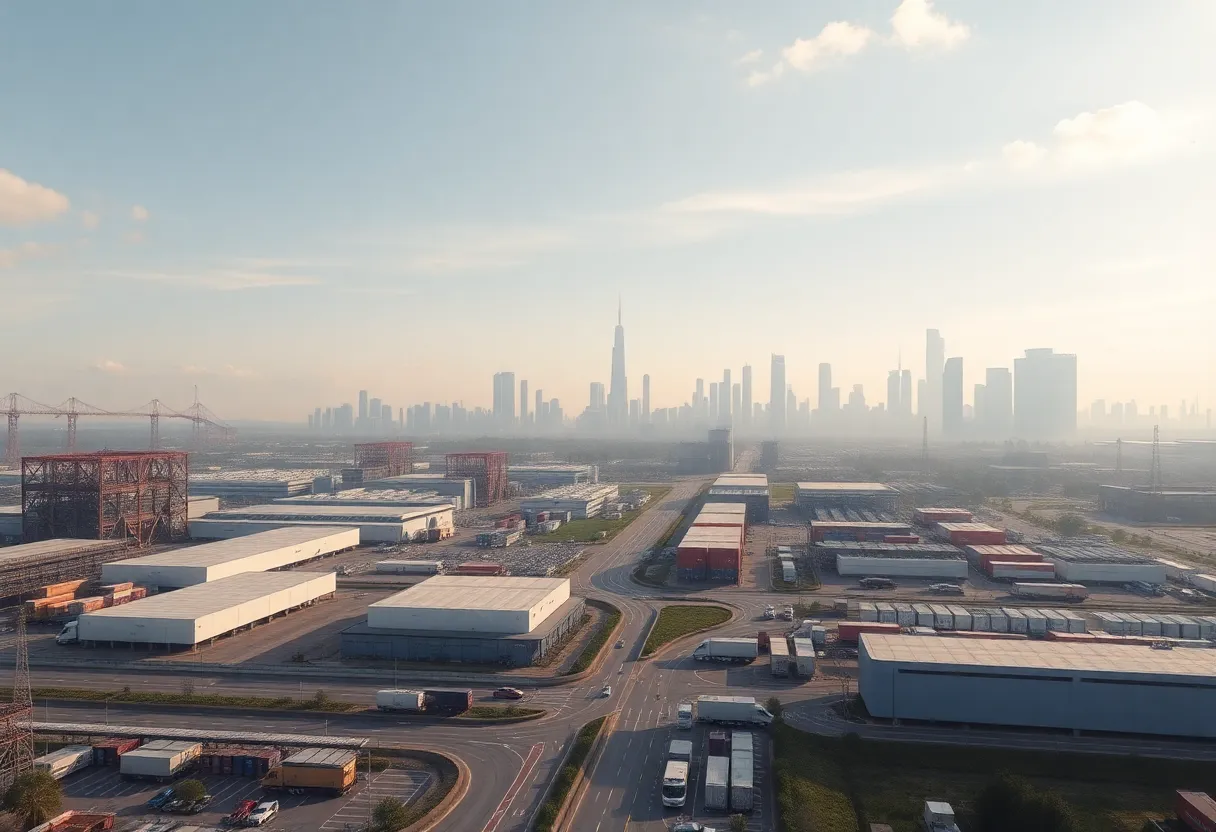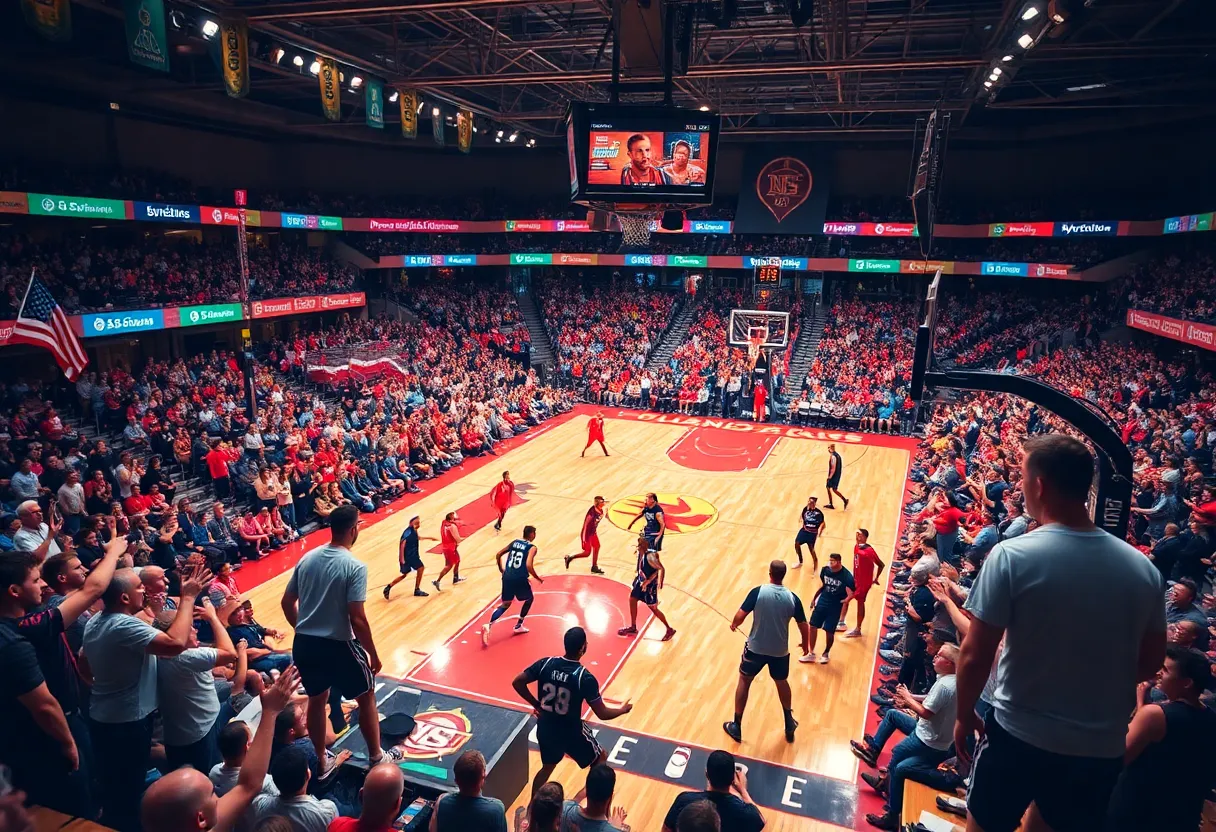Huntsville, Alabama, October 16, 2025
Huntsville, Alabama has been recognized as one of the top 10 emerging industrial markets in the U.S. Its rapid growth mirrors development in Omaha, with strong logistics and tech incentives driving success. Local investments enhance its appeal as a prime location for industrial expansion. A proposed industrial park near Millard in Nebraska reflects efforts to replicate Huntsville’s strategies, boosting competitiveness in the Midwest against the South’s manufacturing growth.
Huntsville, Alabama: Ranks Among Top 10 Emerging U.S. Industrial Markets
Huntsville, Alabama, has been identified as one of the top 10 emerging industrial markets in the United States. This ranking highlights the city’s rapid growth, which draws comparisons to the development seen in Omaha, Nebraska. Key factors contributing to Huntsville’s rise include its strong logistics hubs and attractive tech incentives, positioning it as a prime location for industrial expansion.
At the forefront of this development, Huntsville’s industrial sector is benefiting from strategic investments that mirror successful models in other regions. Officials in Nebraska are observing these trends and considering similar approaches, such as the proposal of a new industrial park near Millard. This move aims to enhance the Midwest’s competitiveness against growing manufacturing expansions in the South.
Supporting this ranking, Huntsville’s logistics infrastructure plays a crucial role in its appeal to businesses. The city’s access to major transportation networks facilitates efficient supply chain operations, making it easier for companies to distribute goods nationwide. Additionally, tech incentives provided by local and state governments have drawn innovative firms, fostering job creation and economic diversification.
In comparison, Omaha’s growth trajectory serves as a benchmark for Huntsville’s potential. Like Huntsville, Omaha has leveraged its logistical advantages and incentives to attract industries, resulting in sustained economic progress. Nebraska’s interest in replicating these strategies underscores a broader trend where regions are adopting proven tactics to bolster their industrial bases.
The proposal for a new industrial park near Millard in Nebraska represents a direct response to these developments. This initiative could include similar elements such as improved logistics facilities and incentive programs, aiming to create a more robust manufacturing ecosystem in the Midwest. By doing so, it seeks to counter the dominance of Southern states in industrial growth, promoting a more balanced national landscape.
Further details reveal that Huntsville’s ranking is based on metrics like job growth, investment inflows, and infrastructure development. These elements have collectively elevated the city’s status, making it a magnet for businesses seeking expansion opportunities. The parallels with Omaha highlight how targeted policies can drive regional success, encouraging other areas to follow suit.
Background context on this trend shows that the U.S. industrial market is evolving rapidly, with emerging hubs challenging established ones. Huntsville’s inclusion in the top 10 underscores a shift towards areas with strong foundational assets, such as transportation and technology support. This evolution is not isolated; it reflects a nationwide pattern where states are enhancing their competitiveness through strategic planning.
The competitive positioning of the Midwest against Southern expansions is a key theme. While the South has seen significant manufacturing growth due to factors like lower costs, the Midwest is countering with initiatives that emphasize logistics and incentives. This dynamic illustrates the ongoing efforts to distribute industrial opportunities more evenly across the country.
In summary, Huntsville’s ranking as a top emerging industrial market signifies a promising future for the region, driven by logistics hubs and tech incentives. The inspiration drawn from Omaha’s growth and Nebraska’s responsive strategies highlight the interconnected nature of U.S. economic development, fostering a competitive environment for all.
To expand on the implications, industries in Huntsville are experiencing increased activity in sectors like aerospace and defense, which align with the city’s historical strengths. This growth not only boosts local economies but also contributes to national productivity. Similarly, the proposed industrial park near Millard could stimulate similar sectors in Nebraska, potentially leading to collaborative opportunities between regions.
Overall, these developments emphasize the importance of adaptive economic policies in today’s business landscape. As more areas adopt comparable strategies, the U.S. industrial sector may see enhanced innovation and efficiency, benefiting the broader economy.
Key Factors Driving Growth
The primary drivers behind Huntsville’s success include:
- Logistics hubs: Enhanced transportation networks that support efficient goods movement.
- Tech incentives: Government programs that attract technology firms and promote innovation.
- Comparisons to Omaha’s growth model, which has effectively utilized similar assets.
Broader Implications
This ranking not only elevates Huntsville but also prompts other regions, like Nebraska, to refine their approaches. The proposed industrial park near Millard is a step towards aligning with these trends, ensuring the Midwest remains a viable option for industrial investments amidst competition from the South.
FAQ
Below is a frequently asked questions section based on the article’s content:
- What is Huntsville, Alabama’s ranking in emerging U.S. industrial markets?
- Huntsville, Alabama, ranks among the top 10 emerging U.S. industrial markets.
- What factors contribute to Huntsville’s industrial growth?
- Factors include logistics hubs and tech incentives.
- How does Huntsville’s growth compare to another city?
- Huntsville’s growth draws comparisons to Omaha’s growth.
- What strategies are Nebraska officials considering?
- Nebraska officials eye similar strategies, with a new industrial park proposed near Millard.
- How does this position the Midwest?
- This positions the Midwest competitively against Southern expansions in manufacturing.
Key Features Chart
Below is a simple table highlighting the key features of Huntsville, Alabama’s emergence as a top industrial market:
| Feature | Description |
|---|---|
| Ranking | Among the top 10 emerging U.S. industrial markets |
| Comparison | Drawing comparisons to Omaha’s growth |
| Key Factors | Logistics hubs and tech incentives |
| Nebraska Response | New industrial park proposed near Millard |
| Competitive Position | Positions the Midwest competitively against Southern expansions in manufacturing |





